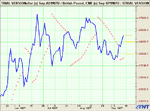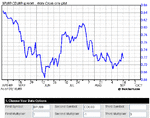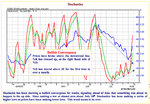Hi Fastnet
I currently have a long on Soyabean Oil (opened 7th Sept) which after some floundering is starting to do quite nicely.
As far as the other Soya commodities are concerned I don't know, but the following is from a report posted on the FullerMoney website and may be of interest to you.
"As the soybean harvest in the U.S. approaches 50%, it is becoming increasingly apparent that a breakthrough in yield technology is taking place. In the important states such as Iowa, Nebraska, and Minn., which enjoyed favourable weather this growing season, the yields are coming in far above expectations, and in most cases 5 to 15 % above the previous records. But what is so shocking is that in states such as Illinois, where conditions were anything but good, yields are above average, and in some cases above a year ago. Some areas of west central Illinois received between 5 and 6 inches of rain from June 1 to Sep 15 (35 to45% of normal) with above normal temps., and yet yields are averaging between 45 and 65 bushels per acre, which is pretty much on par with last year's record. Even in Michigan, which received 25 to 50 % of normal precip. in the most crucial pod filling stage, we are hearing of record yields!
"The national soybean record was achieved last year at 42.2.In Aug of this year, the USDA projected a yield of 38.7, and in Sep,39.6,which seemed high, considering the unfavourable weather during pod fill for so many areas. Next week the USDA will give us their Oct. estimate, probably a 42 type number, but unless the later yields collapse, the final Jan yield will easily be over 43 and an all time record, which seems impossible given the weather. What does this mean? Firstly, current carry out estimates of 150 to 200 million bushels will grow to 400 to 500 million, which is extremely burdensome. Secondly, the trend line yield next year will have to be 43+,assuming normal weather. Added to this, there will be a large increase in bean acres, as farmers will switch from high energy consuming corn to low energy consuming beans. There are many other factors that will decide the price over the coming months (biodiesel for one), but one thing is for sure, far fewer traders will be watching the Weather channel next summer! FYG my yield data come from well over a thousand reports, some anecdotal, but many from seed companies' variety trials."
Regards
Peter



